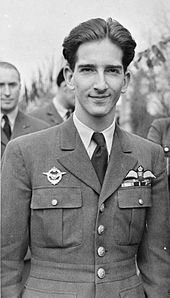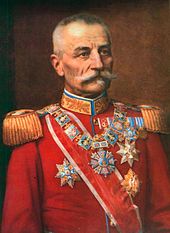Kingdom of Yugoslavia
Template:Infobox State/Maintenance/NAME-German
The Kingdom of Yugoslavia (Serbo-Croatian and Slovenian Kraljevina Jugoslavija/Краљевина Југославија), also referred to as the "first Yugoslavia" (Southern Slavia), was a monarchy from its founding in 1918 until its occupation by the Axis powers in World War II in 1941.
The multi-ethnic state in Southeastern Europe comprised the present-day states of Slovenia, Croatia, Bosnia and Herzegovina, Serbia, Montenegro, Kosovo and Northern Macedonia. The areas southeast of Trieste as well as Istria, today parts of Slovenia and Croatia, were assigned to Italy. The northern border with Carinthia was not fixed until 1920 by referendum on the border that today separates Carinthia and Slovenia.
From 29 October to 1 December 1918, the State of Slovenes, Croats and Serbs (Serbo-Croatian: Država Slovenaca, Hrvata i Srba, Slovenian: Država Slovencev, Hrvatov in Srbov) existed for a short time. In the same year, the Kingdom of Serbs, Croats and Slovenes (Serbo-Croatian: Kraljevina Srba, Hrvata i Slovenaca, Serbian Cyrillic Краљевина Срба, Хрвата и Словенаца, Slovenian: Kraljevina Srbov, Hrvatov in Slovencev), colloquially also called SHS Kingdom, State of Serbs, Croats and Slovenes or (like its predecessor) SHS State. After the coup d'état of King Alexander I in 1929, he was given dictatorial powers and, in the course of a constitutional reform, the official state name was changed to Kingdom of Yugoslavia.
On March 25, 1941, the Kingdom of Yugoslavia joined the Three-Power Pact under intense pressure. This was immediately followed by a coup d'état, which in turn was met with the German invasion in April 1941. The Kingdom of Yugoslavia was occupied by the Axis powers and de facto dissolved (de jure there was a government in exile in London until 1945).
At the end of the Second World War, on the territory of the Kingdom of Yugoslavia, on the basis of the AVNOJ decisions, first the "Democratic Federal Yugoslavia" was established, which was later called the Socialist Federal Republic of Yugoslavia.

Peter II.

Alexander I.

Peter I.
Peoples
The official name of the South Slavic state was initially Kingdom of Serbs, Croats and Slovenes (1918-1921 Kraljevstvo Srba, Hrvata i Slovenaca, since 1921 Kraljevina Srba, Hrvata i Slovenaca).
At the time of the founding of the state, there was talk of a nation consisting of three peoples: Serbs, Croats and Slovenes. The governments, which were always Serb-dominated, clung ironically to this construct, which did not coincide with the attitude to life of most Croats and Slovenes, because it was on this basis that the state had been constructed as a unitary state with the "Vidovdan Constitution". Slavic Muslims and Macedonians were not mentioned as relevant parts of the common nation, but were officially listed as Muslim Serbs and Southern Serbs respectively. Bosniaks were at the same time claimed by the Croats as part of their nation.
In the German-speaking countries, the term Südslawien was also in use.
Territorial division
Finally, at the time of the foundation of the state, the territory of the state included the following territories:
- the Kingdom of Serbia (with today's Northern Macedonia and Kosovo)
- the Kingdom of Montenegro, which had shortly before been united with Serbia
- the Austro-Hungarian occupied territory of Bosnia and Herzegovina
- the Hungarian Crown land of Croatia-Slavonia
- Vojvodina, Hungary
- the Austrian Crown land of Dalmatia
- the Austrian Crown land of Carniola
- parts of the Austrian crown lands Carinthia and Styria settled by southern Slavs
The kingdom was divided into:
- 1918-1921: 7 provinces (pokrajine) based on the original historical units
- 1921-1929: 33 territories (oblasti)
- 1929-1939: 9 banking associations (banovine)
- 1939-1941: 7 Banschaften and the autonomous Banschaft Croatia (Banovina Hrvatska)
Banschaften The banschaften of the Kingdom of Yugoslavia and their capitals were 1929-1941:
- Dravska banovina (Drava County): Ljubljana
- Banovina Hrvatska (Banschaft Croatia): Zagreb (1939 merger of two banschaften by the Cvetković-Maček Treaty (Sporazum Cvetković-Maček, Serbian-Croatian Compromise)).
- Savska banovina (Sava County): Zagreb
- Primorska banovina (Coastal Province): Split
- Vrbaska banovina (Vrbas County): Banja Luka
- Drinska banovina (Drina County): Sarajevo
- Zetska banovina (Zeta County): Cetinje
- Dunavska banovina (Danube County): Novi Sad
- Moravska banovina (Morava County): Niš
- Vardarska banovina (Vardar County): Skopje
Questions and Answers
Q: What was the Kingdom of Serbs, Croats Slovenes better known as?
A: The Kingdom of Yugoslavia.
Q: Who replaced King Alexander I of Serbia in 1903?
A: Peter I of Serbia.
Q: What did Serbia manage to do during this period?
A: Serbia managed to extend its borders and reconquer Kosovo and North Macedonia from the Ottoman Empire.
Q: What did Serbian nationalists want to create?
A: Serbian nationalists wanted to create a unified state for the Slavs of the Balkans.
Q: How did tensions with Austria-Hungary heighten?
A: Tensions with Austria-Hungary heightened when it conquered Bosnia in 1908.
Q: Who assassinated Austrian Archduke Franz Ferdinand in Sarajevo, Bosnia in June 1914?
A: A Bosnian Serb called Gavrilo Princip assassinated Austrian Archduke Franz Ferdinand in Sarajevo, Bosnia in June 1914.
Q: What event eventually led to World War I?
A: The assassination of Austrian Archduke Franz Ferdinand by Gavrilo Princip eventually led to World War I.
Search within the encyclopedia